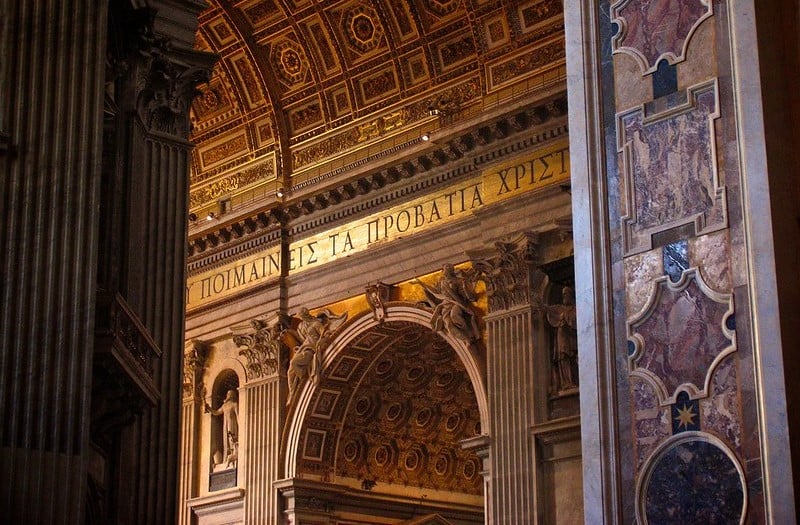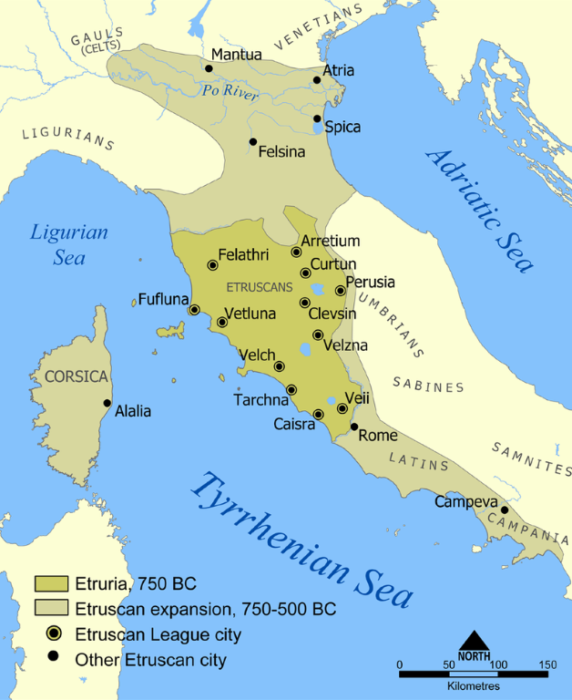
The Latin alphabet is undoubtedly the world’s most recognizable form of written language, whose history goes back in time to the eras of ancient Greek and Roman dominance of the entire Western world.
In its modern form, with its many variations and alterations, the Latin alphabet is officially used by an astonishing 131 sovereign nations, and it is also a co-official script form in twelve other countries.
Even in the countries which do not use it officially, most of their people not only recognize it, but they can also read it, mainly due to the global influence of the English language in our time.
However, the exact origins of the Latin alphabet now used by billions of people are relatively unknown, and very few people are actually aware that the Latin alphabet itself finds its roots in an older form of Greek writing.
The Origins of the Latin alphabet
It is widely accepted in the linguistic community that the Latin alphabet is a product of a long and complicated journey which ultimately has its roots back in the hieroglyphic tradition of ancient Egypt.
However, its most obvious and prominent influence derived from the Greek alphabet itself.
It was no other than the Euboean variation of the Greek alphabet, used on the island of Euboea (Evia) in Greece, which ultimately created what we now call the ”Western Greek alphabets.”
In turn, the western Greek alphabets shaped the Etruscan alphabet, the direct predecessor of the alphabet used by the Romans to write the Latin language.
The Euboean alphabet was used by Greeks who lived in the cities of Chalkis and Eretria beginning in the early years of Greek antiquity.
The Greek Colony of Cumae and How it Shaped the Latin Alphabet

The ancient Greeks of Chalkis were the first to colonize the mainland of today’s Italy.
As early as the 8th century BC, Chalkideans sailed to Italy and established the first Greek colony on the peninsula, the city of Cumae (Κύμη).
In what is now an ancient site near the town of Cuma (whose name was derived from ancient Cumae) lies the secret of the creation of the alphabet which is currently used by most of humankind.
Cumae was not only the first colony the Greek settlers established, but it also became one of the most vibrant and powerful in the centuries before the Roman conquest.

The Greeks of Cumae spread their Greek culture throughout Italy and introduced the Euboean alphabet, the one their ancestors were using on Euboea, Greece to the local people.
The Etruscans, whose civilization came into direct contact and interrelation with the Greek settlers, were heavily influenced by Cumae and the rest of the nearby Greek settlements.
Thus, from approximately 650 BC up until around 100 BC, the Etruscans adopted and used the Euboean alphabet introduced to Italy by the Cumaean Greeks, to create a written form for their own, Etruscan language.
The meanings of most Etruscan words are still unknown today, comprising one of largest conundrums in the world of linguistics. Perhaps, one day, a Rosetta Stone enabling researchers to decipher the meanings of the Etruscan vocabulary will be found. However, the letters they adopted in recording their language in writing are perfectly recognizable.
The Etruscan Alphabet

The alphabet adopted by the Etruscans was almost identical to Euboean Greek, which in turn, was very similar to the Greek alphabets used at that time in ancient Greece. However, there were some differences both in terms of phonetics and in the shape of letters.
By simplifying things a bit, we could say that the appearance of the Euboean, and consequently the Etruscan alphabets, could be described as a mixture of what we know today as the Greek and Latin alphabets.
The Etruscans, of course, added their own elements, shaping the Euboean alphabet in a way that would suit their own language and thus creating the precursor of the alphabet the Romans would eventually use.
For example, while most of the Greek alphabets used the letter ”Π” to depict the sound of ”p,” the Etruscans wrote that letter in a way that was closer to today’s shape of ”P,” paving the way for the formation of what we know today as ”P” and ”p” in English.
The same was true of other ancient Greek letters, such as the letter sigma depicted as ”Σ,” which was written by the Etruscans in a way that was closer to today’s ”S” rather than the Greek ”Σ.”
The Latin Alphabet as a Variation of the Etruscan
Following centuries of becoming more and more instrumental in Italy’s cultural development, the Etruscan alphabet became the basis of the Latin alphabet itself.
The Romans, along with their complete conquest of the Italian peninsula, adopted the Etruscan alphabet as a written form of their own Latin language, which soon became the lingua franca of Italy, eclipsing the Etruscan language and other dialects.
These other languages would eventually become completely extinct.
The Romans, of course, shaped the Etruscan alphabet in a way that would suit their own needs. For this reason, they reshaped some of their letters and introduced new ones over the passage of time while abolishing others.
The Romans kept letters which originally belonged to the Greek alphabet but were later abolished by the Greeks, such as the letter ”F,” which was originally known as ”digamma.”
The Romans did not hesitate to introduce new letters to their alphabet, as well, as soon as they were heavily influenced by the rich culture of Greece following the Roman conquest of Greece.
Prominent examples of this influence include the letters ”Y” and ”Z,” which did not exist in the Latin alphabet until the Romans realized that they needed them to transliterate Greek words that their language was adopting.
Not simply a variation of Greek
It is obvious that without the first Greek colonies of Italy and their massive cultural influence in the region, today’s written word might have been completely different.
However, one must never perceive the evolution of languages as a static and unique process.
Linguistic influences, adaptations and alterations take centuries to create a wholly ”new product” in the form of an alphabet or a language; thus, one cannot simply say that the Latin alphabet is simply a variation of the Greek.
We should all bear in mind that the Greek alphabet itself, a form of written text that shaped Latin so profoundly, was itself nothing more than a product of the evolution of the Phoenician alphabet, which in turn, finds its roots in the hieroglyphics of ancient Egypt.
The journey of any alphabet or language is far more complicated than we could ever imagine, leaving us plenty of room for deep scientific research which can unveil the truth behind one of humanity’s most basic needs, namely to speak and write to forge a connection with others.
See all the latest news from Greece and the world at Greekreporter.com. Contact our newsroom to report an update or send your story, photos and videos. Follow GR on Google News and subscribe here to our daily email!



